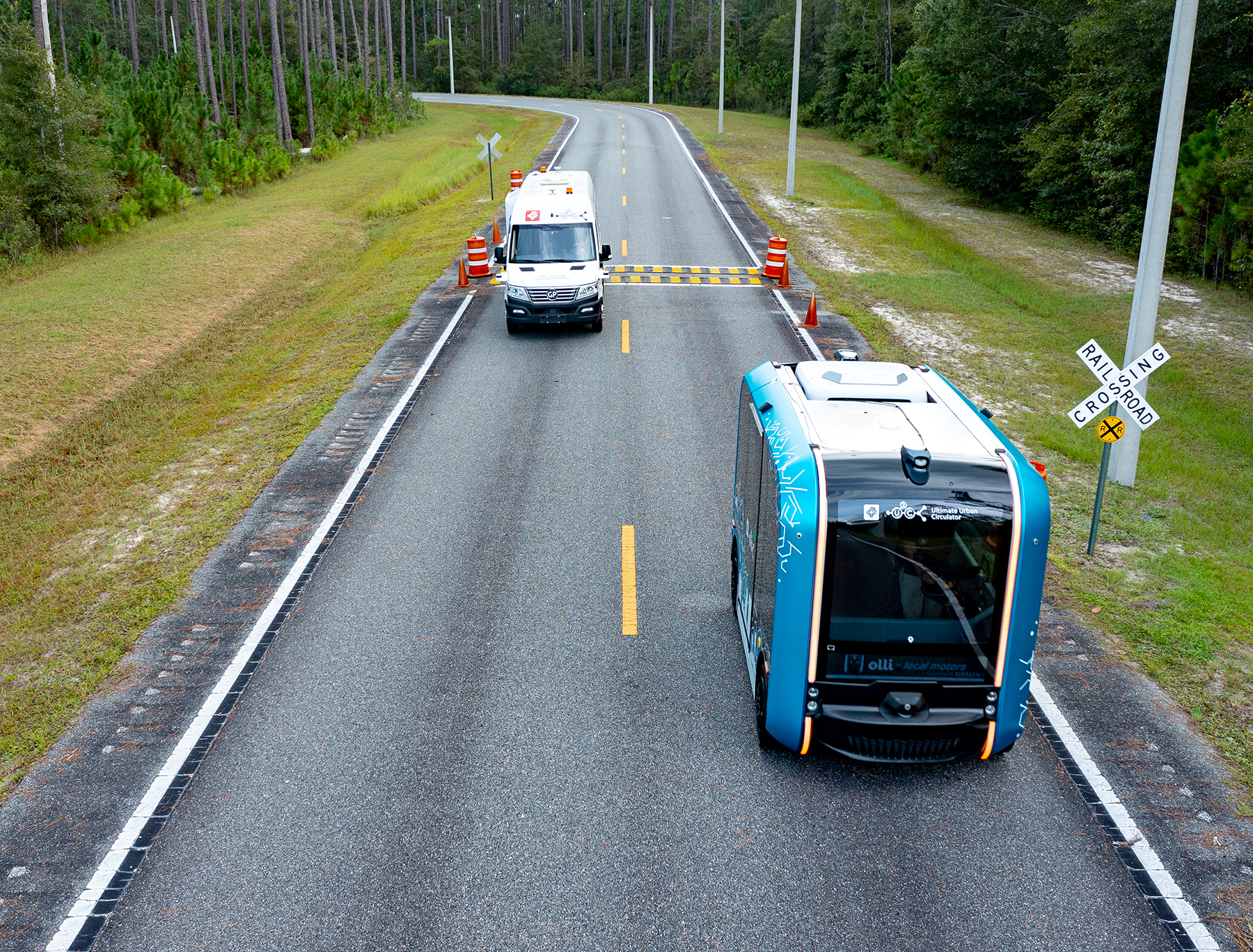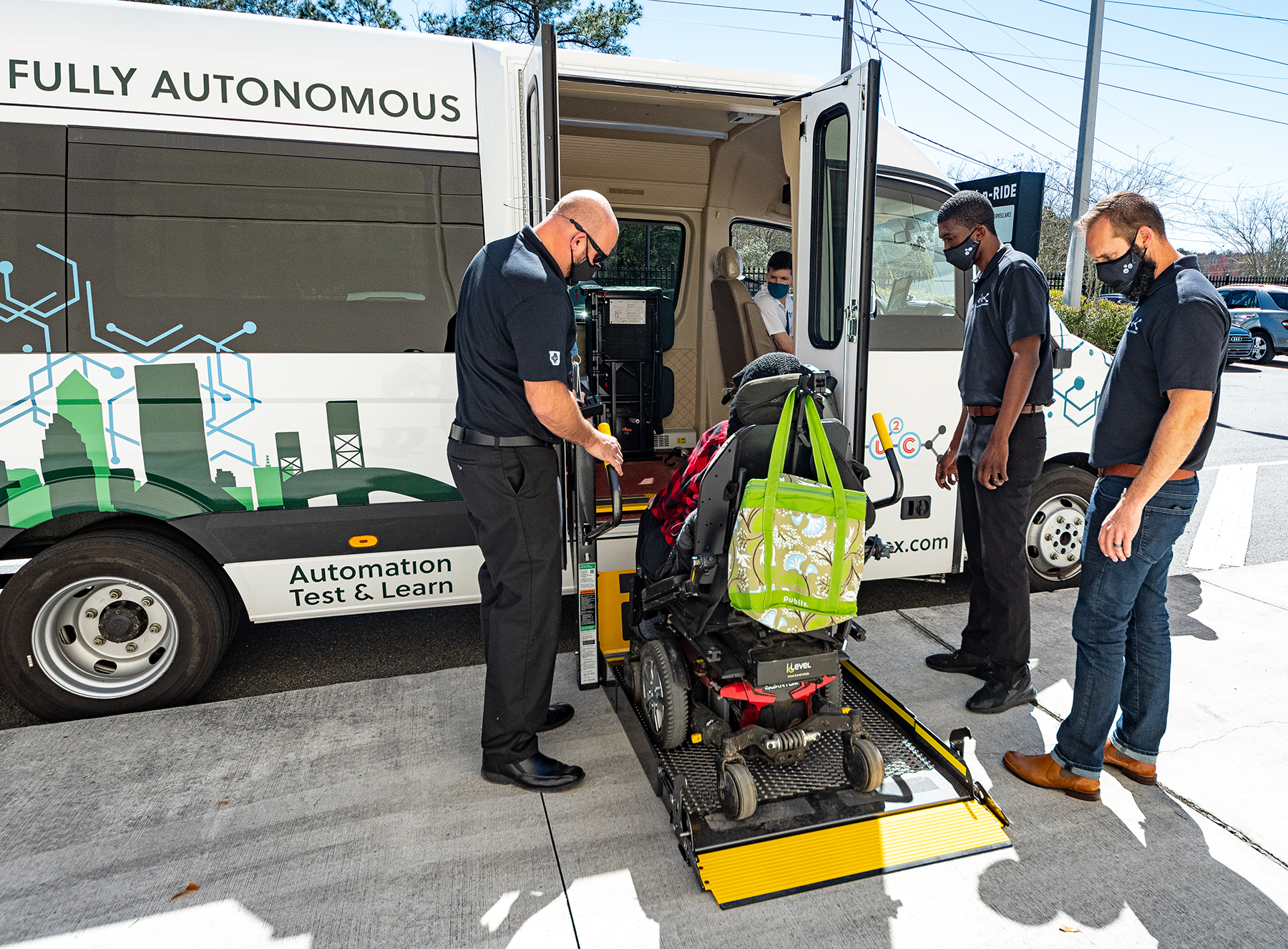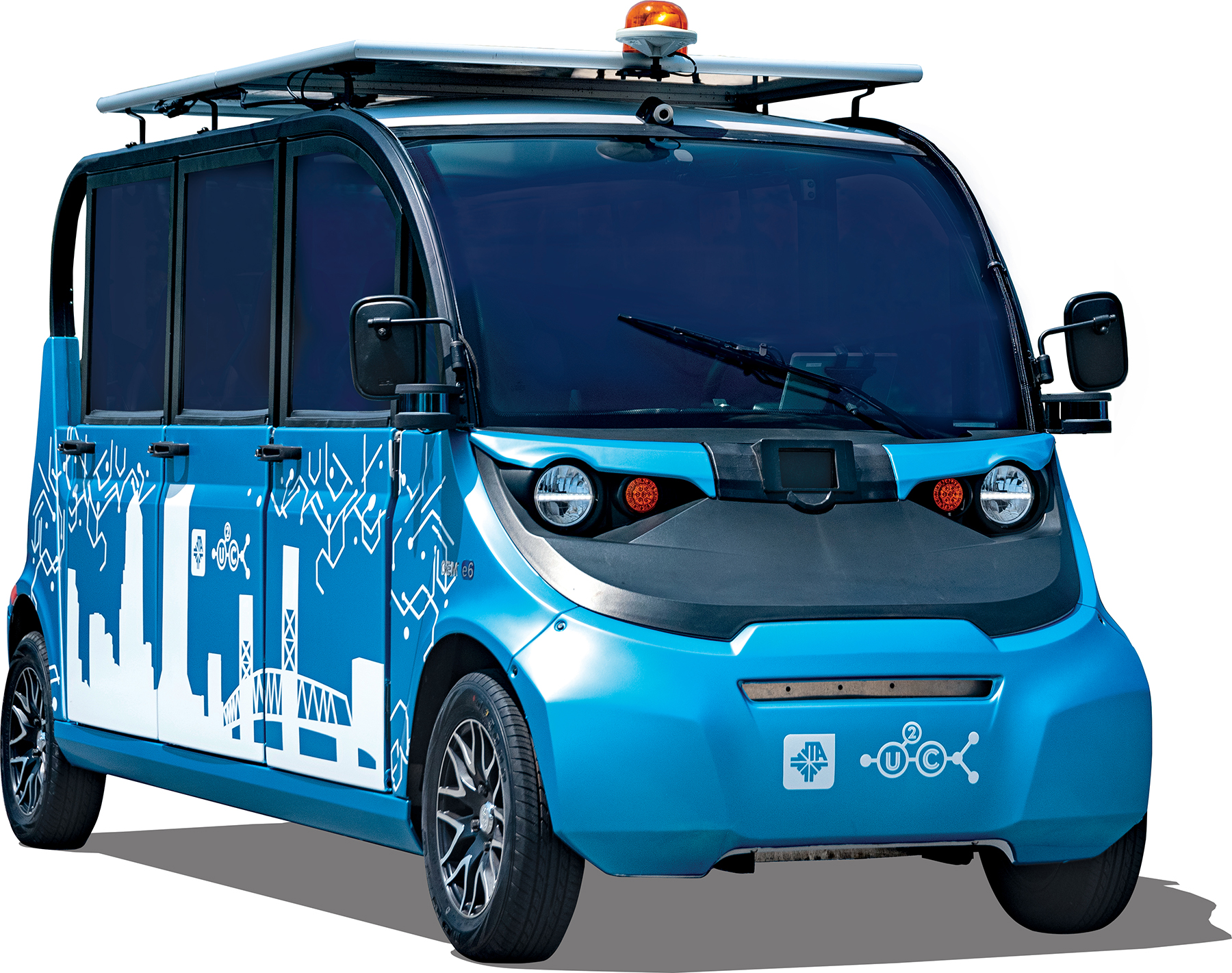By Leslie Nemo
An increasingly obsolete technology is still cruising overhead in downtown Jacksonville, Florida. But soon, the 30-year-old monorail system will be renovated so that the bridgelike structure holding it aloft can instead be used by autonomous vehicles.
The end result, called the Ultimate Urban Circulator, will expand the existing 5 mi round-trip system into a 10 mi loop dedicated to a fleet of autonomous shuttles stopping at stations along the route. The loop will also be at street level along Bay Street, which extends along a portion of the city’s downtown riverfront.
For now, the final product stands to be the largest public sector autonomous vehicle transit program in the country — which means the design and planning team is solving conundrums without existing programs to turn to. “I call this project the pink woolly mammoth,” says Angie Williams, a design and construction project manager with the Jacksonville Transportation Authority. “While there are some principles that are tried and true, it’s nothing like we've ever seen before.”
Payback time
First opened in 1989, the Jacksonville Skyway never came close to the ridership numbers the city originally expected. In 2009, operational costs hovered around $14 million while generated revenue tallied up to about $430,000 — and in 2018, ridership was only about 10% of what the city had originally expected. Finding replacement train systems and operational parts started to get challenging too, says Williams.
Though Jacksonville could tear down the elevated monorail system, doing so would require paying tens of millions back to the Federal Transit Administration. A grant from the agency that helped pay for the initial construction came with a stipulation that the final structure be functional until the end of its useful life or the funding would have to be returned. As it stands now, there’s about $100 million worth of utility left in the monorail support system, Williams says.
“So the question is: Do we really want to take down a structure and have to repay money?” asks Williams. “Or is there a way that we can get a win-win scenario by utilizing the infrastructure and getting increased headway?” The JTA chose the latter.
Planning for the Ultimate Urban Circulator began in 2015 and now consists of a few phases. The first — and the one that has seen the most progress — will prepare 3 mi of Bay Street to host the electric autonomous shuttles, a project partially covered by a $12.5 million Better Utilizing Investments to Leverage Development grant and expected to cost $51.1 million total.
Gearing up
Operating on a city street means the autonomous shuttles will navigate around cars, pedestrians, bikes, and the kind of equipment that shows up in the city for events like football games. For now, a fair amount of the necessary sensors and technology have to be installed along the streets themselves, says Acey Roberts, P.E., a traffic systems manager with WGI Inc., a Florida-based construction engineering company. But the team expects that over time the shuttles will gradually incorporate more of the necessary environment detection systems into the vehicles themselves.

WGI is one of several partners in the Balfour Beatty Vision 2 Reality Team, which won a progressive design-build contract with the JTA to complete a majority of the Bay Street plans.
The drafted design plans aim to incorporate the technology onto as many existing signal poles as possible. Still, the team will likely have to request that the city install more poles along roadways to hold the needed sensors. Fiber optic communication cables will have to be embedded underground too.
The construction plans for these upgrades have to be coordinated with a range of other projects operating on the same street. When the JTA received the BUILD grant for the autonomous vehicle support, the city of Jacksonville received a matching amount meant to help foster residential and commercial development in the same area — a new football facility, science museum, and more are in the works. Any plans for preparing the roadway for autonomous vehicles need to be integrated into these other construction schedules, says Dave Campbell, a project executive with Balfour Beatty.
When autonomous vehicles no longer need the communications equipment the city is installing, then the technology might be able to serve the city in other ways, says Roberts. For example, the project is also building a traffic database meant to hold information gathered from Bay Street vehicles. Other JTA corridors or other city agencies could be added to the system too, providing a broader, citywide perspective on when and where congestion flares.
Golden guidelines
The city is also assessing a suite of different autonomous vehicles on real-life roadways with a small testing facility. Complete with a traffic circle, crosswalk, rain machines, and flooding sensors, the small, paved network provides space for the city to see what existing autonomous vehicle models can offer and what kinds of facilities the city will need its choice to have.

The facility puts each autonomous vehicle model through a range of tests like lane switching, bicycle detection, and emergency vehicle detection. Meanwhile, the city is assessing how well the options meet other design and certification standards nicknamed the Golden 20. The list of attributes includes full Americans with Disabilities Act compliance, approval from the National Highway Traffic Safety Administration to be on public roads, cybersecurity measures, and the ability for occasional fast charges.
The test track has seen eight different vehicles so far, including a standard cargo van outfitted with a kit that turns it into an autonomous vehicle, Williams says. In late October, the JTA vice president went to England and Germany to see some of the possible test vehicles in person.

Construction on Bay Street itself to prepare it with all the necessary sensors and equipment should start in February. Beyond that, the Ultimate Urban Circulator has a lot of plans to work out.
The monorail guideway will be removed from the elevated track and replaced with decking, converting the overhead infrastructure into a fairly typical bridge. Substructure and foundation studies will help the project leaders decide what kind of crash wall should go into place. So far, the transformation has a $246 million budget, thanks to a local gas tax that will be levied for 30 years.
To reach its 10 mi potential, the Ultimate Urban Circulator will also need to be expanded into nearby neighborhoods. A $1.7 million Rebuilding American Infrastructure with Sustainability and Equity grant is going toward the studies determining where those stops ought to be. And somehow, the autonomous vehicles will need a way to reach Bay Street from the elevated track. A ramp might be the most obvious solution but would require right-of-way expenses, so other design options are up for consideration too, Williams says.
And even if the development pace is slow right now, the hope is that it pays off.
The end goal is a turnkey solution that can then be implemented elsewhere, says Roberts. “We can be an example for other cities across the country and show them how it can be done, hopefully a little faster in the future.”



